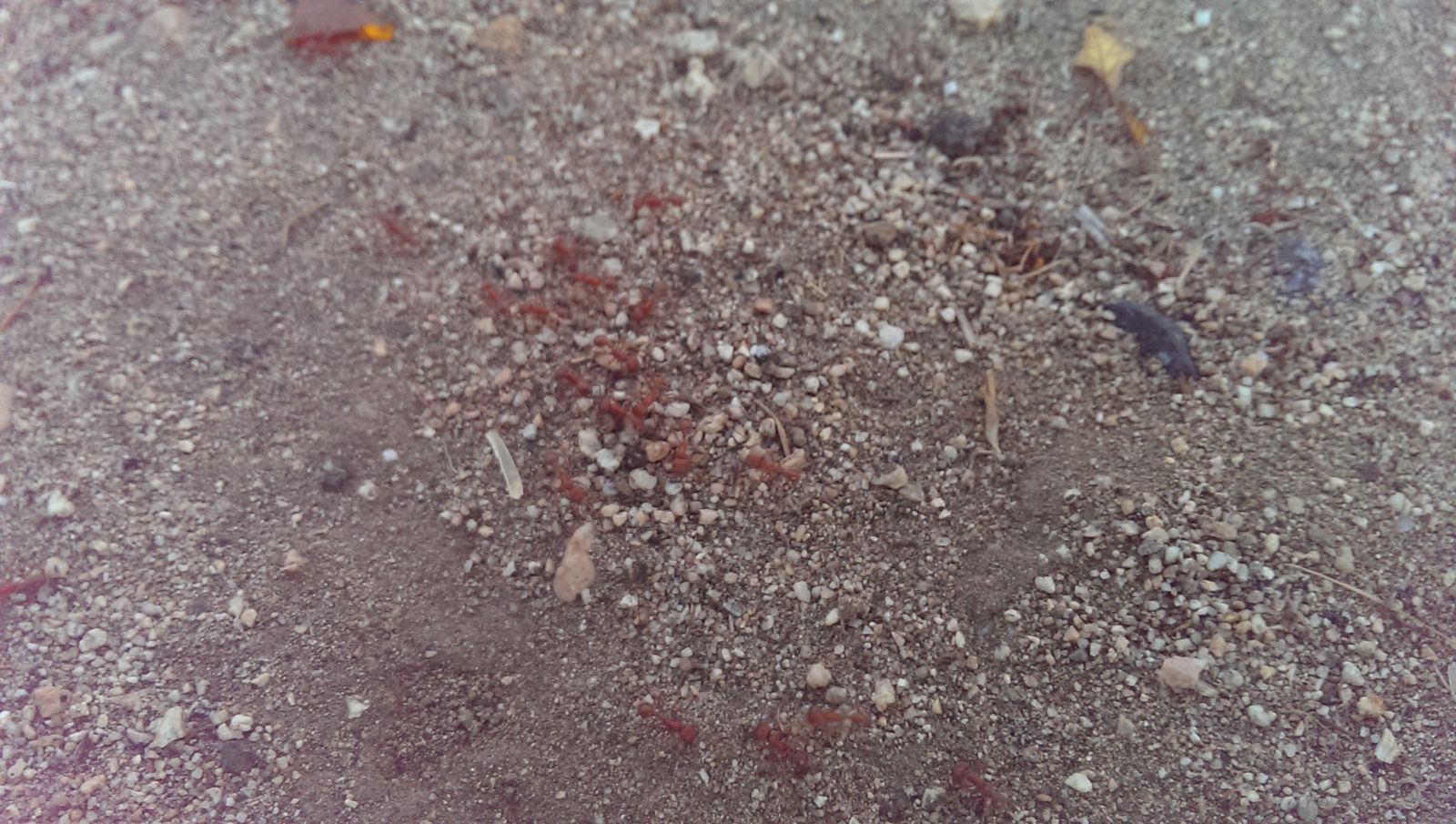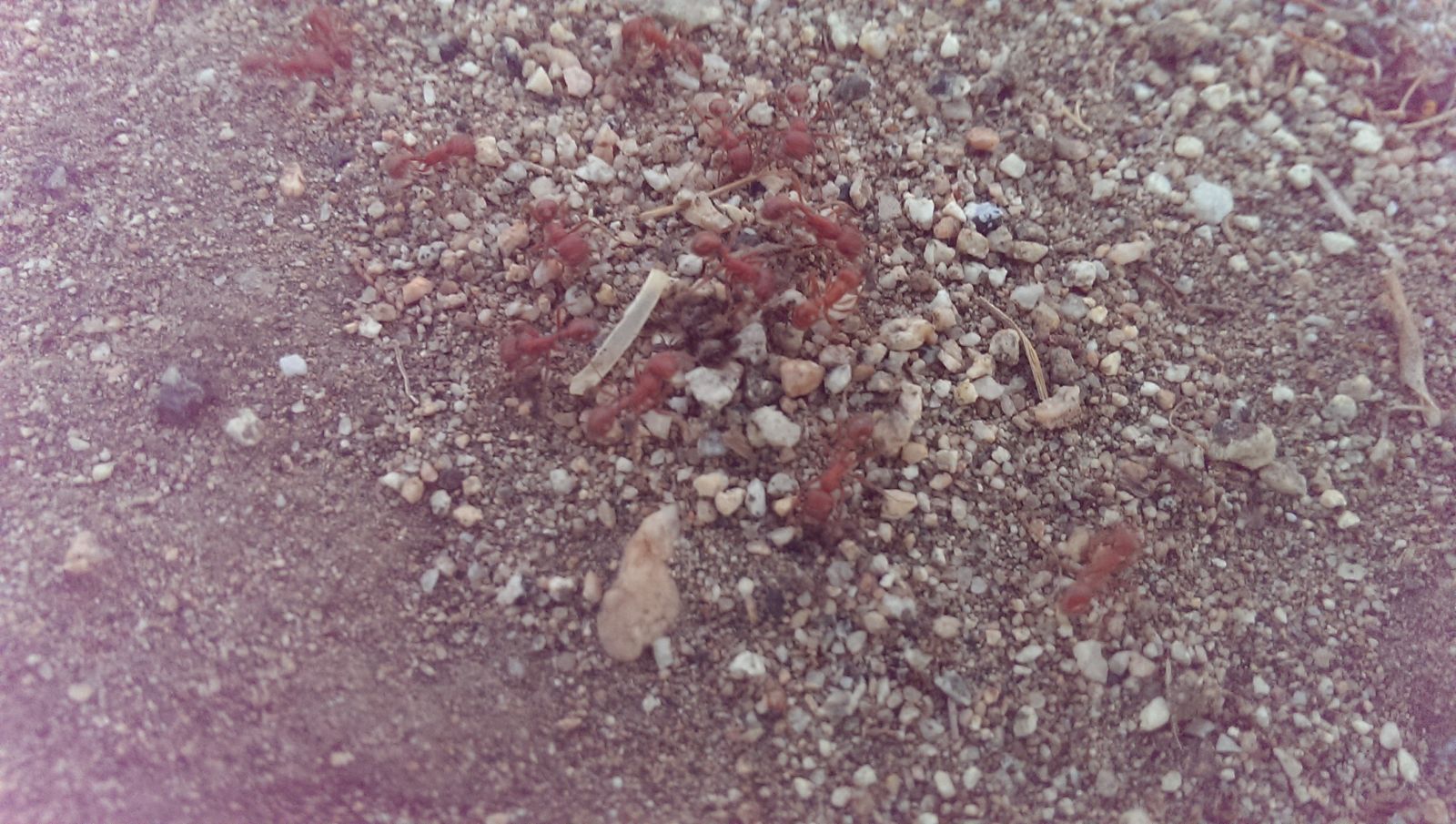Out where I am, it's not unusual to come across Argentine vs. Pogonomyrmex battles. Today, I came across a small group of Pogonomyrmex that appeared to be digging/moving dirt in a frenzy with Argentines dashing about, but no obvious signs of battle. What the heck were they doing? Maybe trying to stack sand grains and bury the combatants??























